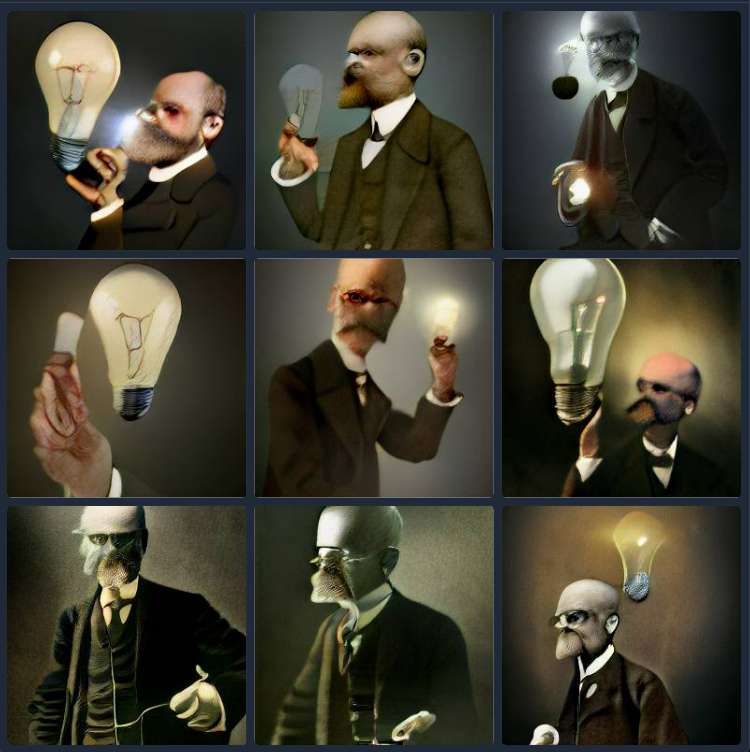
Electric Durkheim
COLEMAN, Leo. 2019. Widened reason and deepened optimism: electricity and morality in Durkheim’s anthropology and our own. In: Simone Abram; Brit Ross Winthereik; Thomas Yarrow (eds). Electrifying anthropology: exploring electrical practices and infrastructures. London: Bloomsbury Academic, pp.42-63.
ELECTRICITY AS 19th CENTURY VOCABULARY FOR RELIGIOUS-DIVINE-MYSTICAL-SPIRITUAL-STRANGE FORCES
[E]lectricity provided nineteenth-century scholars of religion, including William Robertson Smith, William James and Émile Durkheim, with a scientific, positive vocabulary they could use to understand the force and reality of mystical experiences and ‘strange’ religious beliefs, which were just then perplexing anthropologists as much as the physics of electromagnetism was problematic for their scientific colleagues. Briefly put, scholars and spiritualists alike in the late nineteenth century made comparisons between divine powers or spiritual forces and electricity. (Coleman 2019:43)
ELECTRIC DURKHEIM
Durkheim refined this comparison as he built a science of social forces, drawing on his own and his associates’ readings of non-Western ethnographic material to assert a sociological connection between ideas of force (whether ‘primitive’ and religious or modern and scientific) and an underlying and more fundamental reality of social organization (founding the sociology of knowledge, in the process). Non-Western conceptions of moral power and magical efficacy, pre-eminently as expressed through the Oceanic term ‘mana’, provided an important model for Durkheim’s grounding of theoretical ideas of force in experiences of a social order, and mana was itself often directly analogized to invisible and all-pervasive electricity, as the imagined force behind ‘magical’ feats. (Coleman 2019:43)
DURKHEIMIAN INSIGHTS ON PERSONS-THINGS & MORAL-MATERIAL RELATIONS
More recently […], Oceanist and Indianist ethnographers […] have found in Durkheim’s glosses of missionary ethnography and colonial observations a remarkable set of insights into general processes of ‘ethical mediation’ between persons and things, insights that provide a useful framework for understanding even contemporary ethnographic encounters with forces that are at once moral and material, simultaneously affecting our bodies and forming our connections to others. (Coleman 2019:44)
DURKHEIM’S 19th CENTURY DISCOURSE NETWORK
Durkheim’s account of social force as a reality equal to physical forces like electricity drew on the technological terms of his nineteenth-century ‘discourse network’. (Coleman 2019:44)
RUNNING THE “ELECTRICAL ANALOGY” THE OTHER WAY AROUND
I turn to these scholarly episodes […] in order to explore how concepts of social force and conscience collective, developed through anthropological comparisons between electricity and religion, may still afford insights into contemporary energy infrastructures. In short, I want to run the ‘electrical analogy’ between physical and moral concepts the other way and see what it produces now. (Coleman 2019:44)
INFRASTRUCTURES as SOCIAL FORCES (facts?) & COLLECTIVE REPRESENTATIONS
I return to the Durkheimian anthropology of social forces to better understand an aspect of energy infrastructures that I think has been underemphasized […] [:] their central role in sustaining human collectives (if not always self-conscious ones), serving people […] as sites and objects for the elaboration and institution of collective or commonly held ideals and ideas about the world and about the beings and forces that populate it. Infrastructures are […] often directly at issue when people come to ask how some collective ‘we’ does and should live in the world, shaping occasions for specific articulations of collective need and common interest. Public infrastructures depend upon judgements about what a given community shares – how it shares in and shares out common goods (Coleman 2019:44)
THE DENSE RELATIONAL SOCIAL LEGITIMACY OF INFRASTRUCTURES
Collective needs emerge and become real in socially dense encounters with material architectures, but also in reciprocal demands for the common goods that are associated with them – goods that legitimate their costs and burdensome installation in the first place, but that are frequently not realized through the construction or provision of infrastructures alone (Coleman 2019:44-5)
TECHNIQUES as SOCIAL TIES-FORCES-FACTS
[F]or Durkheim, social ties were most real, most effective, in their conceptual and formal elaboration rather than in their material or bodily concretion, leading him to ask how, in the flux of social life, people sense, grasp and rework the ‘force congealed in the techniques we use’ (Durkheim 1995, 214). (Coleman 2019:45)
ELECTRICAL-MORAL FORCES
In this chapter […] I will focus on the theoretical and anthropological issues that disciplinary comparisons of electrical and moral forces have raised (Coleman 2019:45)
INFRASTRUCTURES & FORMS OF LIFE
[I]nfrastructures also provoke judgements from people nearby, animating concerns about the forms of life and the proliferating relations fostered by their concrete existence and the energies or messages they convey. (Coleman 2019:46)
LÉVI-STRAUSS’S CLASSIC EXAMPLE
[T]o take a classic example of anthropological attention to such things, Lévi-Strauss tells us that Indians in the Mato Grosso of Brazil ‘mistook’ the buzzing of a telegraph line for the noise of wild bees at work and brought down the poles in search of honey, interrupting communications between settlers in their territory. He goes on, however, to flesh out this reported association. Through their interpretation of the buzzing of these energized lines, he implies, the Indians rightly associated this infrastructure with the never-benign intentions of settlers and missionaries. The latter, in their turn, used the telegraph to share news, mitigate their isolation and share fearful fantasies of vulnerability to the attacks of ‘wild’ Indians. Meanwhile, for the anthropologist, the dilapidation of the ‘line’ signified the futility of technological civilization and paradoxically heightened the ruined nature all about it – ‘surprisingly enough the line adds to rather than detracts from the surrounding desolation’ (Lévi- Strauss 1992, 272). One technological object was the singular vehicle for diverse thoughts about natural fecundity, human difference and moral evil. (Coleman 2019:46)
INFRASTRUCTURAL IMAGINATION
[I]nfrastructures incite magical and metaphorical understandings, projecting what we naively take to be material facts into spectral realms of imagination in ‘irreducibly indeterminate’ ways (Coleman 2019:46)
RELIGION, NATURAL SCIENCE, ANTHROPOLOGY & TECHNOLOGY IN THE LATE 19th CENTURY
In the later nineteenth century, there was a constant ‘signals traffic’ between religion, natural science and the burgeoning human or ‘moral’ sciences, including anthropology. At the same time as science plumbed the mysteries of nature and technology harnessed seemingly fundamental forces, this also provoked new revelations and shaped what William James called, at the time, the ‘contemporary vagaries’ of religious experience (1917, 108) – by way of illustration, James cited one divine who exhorted his flock to ‘attach the belts of our machinery to the powerhouse of the universe’ (James 1917, 101). (Coleman 2019:46-7)
MECHANICAL/DIVINE ENERGY ANALOGIES
Such analogies between mechanical and divine energy were not mere outbursts of enthusiasm, however. They had a scholarly pedigree in biblical criticism, which we can trace back to a novel scientific materialism and then forward again through their transformation into sociological concepts. (Coleman 2019:47)
WILLIAM JAMES & WILLIAM ROBERTSON SMITH
A decade before James delivered the lectures on which he based […] [The] Variet[ies] of […] Religious Experience in Edinburgh (in 1901–2), the philologist William Robertson Smith had lectured in Aberdeen on ancient ‘Semitic’ religious rites, pursuing a then-scandalous historical and material accounting for fundamental religious phenomena. (Coleman 2019:47)
SMITH’S METAPHOR FROM ELECTRICITY
To kick off his evolutionary schema, Smith explained the holiness of archaic sanctuaries and the operation of the sacred in the world as grasped by ‘primitive’ thought, as something essentially thoughtless, automatic, or mechanical: ‘The mysterious superhuman powers of the god – the powers which we call supernatural – are manifested, according to primitive ideas, in and through his physical life, so that every place and thing which has natural association with the god is regarded, if I may borrow a metaphor from electricity, as charged with divine energy and ready at any moment to discharge itself to the destruction of the man who presumes to approach it unduly’ (Smith 1972, 151). (Coleman 2019:47)
SMITH’S DISCOURSE NETWORK
Smith […] was plugged in to the intellectual and scientific world of Edinburgh and Cambridge, in which experimentation and theorization on electrical phenomena was among the most prestigious of scientific endeavours. As an editor of the celebrated ninth edition of the Encyclopædia Britannica, he solicited articles on electrical forces from James Clerk Maxwell, the originator of the modern mathematical description of electricity (and, not incidentally, of a famous ‘daemonic’ thought experiment about entropy). (Coleman 2019:47)
Beyond his direct appropriation of electrical terms from the elite intellectual culture of his day, however, Robertson Smith also innovated – in the very terms of this discourse network – by forging a metonymic set of connections (connections of contiguity) between religion, communities of worship and electricity-like forces. This set of connections allowed consideration of forces that flowed between persons and things and that could be manipulated – through ritual and symbolic practices – to localize and organize more diffuse, more plural, powers. (Coleman 2019:48)
MATERIAL COMPREHENSION OF THE HUMAN
Throughout Europe in this period, the already remarkable fruits of the new physical sciences, based on experimentation, manipulation of electrical forces and chemical bonds and precise measurement of physical reactions, promised a deeper understanding of humans as beings constituted of matter – an understanding that Smith, in his account of ‘primitive’ materialism, simply placed at the roots of human religious evolution. (Coleman 2019:48)
19th CENTURY MATERIALIST DISCOURSE NETWORK (Smith, Helmholtz, Mach, Malinowski)
The ‘discourse network’ of the time period […] impelled investigations into the mysteries of selfhood and human subjectivity through the exploration of material processes, automatic recording, physical impulsions and synesthetic crossings between the senses (which revealed the shared physical basis and bodily location of all sensation and perception) […]. Such researches dethroned metaphysical spirits, divine purpose and ‘soul’ from explanations of subjectivity and history alike. In human biology, this network can be traced back at least to Helmholtz’s experiments on the speed of electrical impulses in nerve fibres, which spawned burgeoning fields, like psychophysics, that used new technical devices to produce precise measurements of mental and psychological phenomena […]. Indeed, psychophysics was adopted as a prime example of a new unified, positive science by the natural philosopher Ernst Mach, on whose philosophy Malinowski would later write a doctoral dissertation – laying the foundation for anthropology’s own brand of materialism and functionalism (Coleman 2019:48)
ELECTRICAL MONISM
Energy, vital forces and automatic communication, whether discovered in frogs or postulated as the primitive human condition, seemed thus to promise a new unification of the natural with the human sciences, a veritable electrical monism in which mathematical physics, as the queen of all sciences, would govern inquiry into the human being as a biological organism, including his or her thought processes and development as a species. (Coleman 2019:48)
DURKHEIM BEYOND SMITH
How discrete bodies were linked together to form a self-conscious collective was, of course, the main question in Émile Durkheim’s late-nineteenth-century turn to religion as the central topic and testing ground for the new science of sociology. Influenced by his reading of Robertson Smith, Durkheim’s larger project was indeed congruent with Smith’s special interest in the forces which operated between persons and things. Durkheim had a broader mission, however, not only to ‘explain the nature and origin of the forces which stimulate social action’ (Jones 2005, 177), but also to reveal the ‘logic of collective representations [as] the logic of logic – the foundation of all thought in social as distinct from mental life’ (Lemert 2006, 16). An analogy between religious forces and electrical ones played a distinctive role in buttressing this more ambitious project – which moved beyond literal or metaphorical physics to define the distinctive properties of social relations as such. (Coleman 2019:49)
Whether the reference [of Durkheim to Smith] is direct or not, Durkheim ultimately takes his comparison in a very different direction than Smith does. For Durkheim, the totemic force is not a matter of primitive belief and even less so of automatic reaction to natural forces. It is real or true, and it is its very objectivity as a force in the world that is attested by the fact that it acts upon believers mechanically. […] That is, the force of the totem arises not from a physical ground (or, even less so, pure primitive imagination) but from ritual practices that gather groups of people, a society, around the totem. […] Most importantly, a mediating movement of thought grants the experience of collectivity a claim to truthfulness independent of individual beliefs or autonomic physical reactions. The forces generated in rituals are known as totemic, and their operation can be predicted and harnessed because there is a category of such forces which is constructed and shared, through collective experience, as a means of description and explanation of what the subject has been through. (Coleman 2019:49-50)
[T]he point is that an energy is felt in the processes of congregation that is neither a reflex of an encounter (as for Robertson Smith) nor only a secondary emanation of the association of bodies, their ‘closeness’, as in certain readings of Durkheim. Rather, this energy (or effervescence […]) is channelled in thoughts and represented in forms which grant it an objectivity greater than that held by the passing moment or the contingent states of the people gathered together. (Coleman 2019:50)
ANONYMOUS & IMPERSONAL RELIGIOUS FORCE (not metaphorical, but automatic)
Durkheim defined religion in its elementary ‘totemic’ forms as being derived from the mental grasp (or representation) of an ‘anonymous and impersonal’ force that courses through beings and things and gives them power and life. (Coleman 2019:49)
COLLECTIVE REPRESENTATIONS
[N]either the congregation nor the totemic object is a thing in itself. Both are collective representations, and their reality is that of a shared idea or even, more precisely, a feeling that, qua idea or feeling, necessarily takes place in the inner world of the social person but does not find its origin or its truth there. Whether congealed in a social body or a thing or simply existing as a common property in the intellect of thinking subjects […], such representations become a personal means of understanding and organizing the forces of association on which human beings depend. To […] call this a ‘personal means’ is not to say that the force itself has to be personified but rather that it provides the power for the self-realization, through internal and external relations, of persons. (Coleman 2019:50)
Notions like mana reveal the ‘categories’ of collective knowledge, concepts inhering in human social experience and distributed and communicated by its processes, as distinct from both the Kantian categories, which are integral to individual understanding, and synthetic judgements that depend on a brute encounter with the ‘outer’ world (see Siegel 2006). Such collective categories are found in, and founded upon, a group’s treasury of commonly held ideas, passed down through myth and education and reinforced by rituals that distribute – to specific persons – the forces they describe. (Coleman 2019:52)
MAUSS & HUBERT BEYOND DURKHEIM
Mauss and Hubert had found, in non-Western concepts like ‘mana’, an idea of a force that is a physical manifestation of experiences of ritual and congregation, which can be congealed in an object and also in-forms a shared and yet intensely personal understanding of power and efficacy. In their study of magic, then, the collective representation of social forces is more capaciously defined in ways that allow us to see what is elided or obscured by the perhaps still overly mechanical electrical analogy that Durkheim used. (Coleman 2019:51)
MAUSS & HUBERT CONTRA FRAZER’S MECHANISTIC EXPLANATIONS
Mauss and Hubert criticized Frazer’s wholly mechanical explanations of the operation of ‘primitive’ magic through the association of things and ideas. They pointed out that to perform or assist at a magical rite, howsoever mechanical it might be, people must hold an already complex idea – like mana – of the power or energy that is at the command of the sorcerer or officiant and that affects whatever associations magic achieves (Coleman 2019:51)
RELIGIOUS ORIGIN OF THE IDEA OF FORCE (including scientific)
Not only is the general ‘idea of force … of religious origin’, Durkheim further argues that the religious life in fact provided the very model from which the scientific concept of physical forces was derived. (Coleman 2019:52)
SOCIOLOGY ENRICHES SCIENCE
[S]cientific reason is enriched by sociological reason. Tutored by sociology, physical science will move beyond positive knowledge of discrete things composed of individual parts, animated by definite causes. (Coleman 2019:53)
AMODERN DURKHEIM
Durkheim’s newly defined and freshly visible social forces, evident in the totemic social organizations and in experiences of collective effervescence, are neither simply material nor only moral/spiritual. […] Durkheim rejects this division of attention and interest as, finally, unscientific, or at least unalert to the formative power of collective representations even within the physical reality of the material world as it is occupied and known by human beings. (Coleman 2019:53)
BEYOND AND BEHIND DURKHEIM
Obviously, there are other analogies between energy and society now available to us that are less mechanical than the electrical metaphors on which Durkheim and his contemporaries drew. Current theoretical alternatives include anthropological reworkings of both biological energy and historical time in terms of open-ended and non-iterative processes like entropy or through the Deleuzian energetic metaphor of ‘potential’ (e.g. Barry 2015; Helmreich 2013). But the question of the distinct and different reality of social forces, as such, not merely their metaphorical properties, is uniquely at stake in Durkheim’s writing on religious energies and their collective production. (Coleman 2019:54)
ONTOLOGICAL QUESTION (dimensions of life)
Does anthropology necessarily “reduce” all energy to “the social”? Or is the social one among other dimensions of life?’ (Singh 2014, 174). (Coleman 2019:55)
BHRIGUPATI SINGH
Faithful to his Deleuzian inspiration, Singh declines to ‘negate’ Durkheim’s grounding of forces in human associations and rather seeks to continue beyond the point where, he argues, Durkheim stops – ’moral authority’, ‘society’ – to move conceptually into ‘other dimensions’ of life, where other forces propagate novel potentials of relation and action beyond the merely human, or beyond those already given in a particular state of society. […] Singh’s account of religion as a force that opens outward beyond ‘the social’ and beyond ‘moral authority’ into other dimensions of ‘life’ has a real ethnographic power. (Coleman 2019:55)
DURKHEIM BEYOND SOCIETY
In fact, the claimed reality of religious forces appears, in some respects, to be more important to Durkheim than their putative reliance on a hypostatized society pre-existing their emanation. While certainly the collective with its moral authority is a central prop of Durkheim’s thought, read together Durkheim and Mauss – the latter especially – figure the collective as itself formed of a force which relates; meanwhile, specific societies only gain what formal reality they have through knowledge of those relations. (Coleman 2019:56)
That is, the force of relation is what is real and what is felt; society is in a sense only a name for it – love or electricity will serve just as well. Indeed, since this experience of force is both personal and shared, it is frequently the case that social forces are thought and recognized as the public form of ‘elements borrowed from our psychic life’ (Durkheim 1995, 368) – like love – or on the basis of analogies drawn from our experience of the technological and material objects that also populate our experiences. In his or her dealings with others, the subject experiences an inner feeling of an impulsion or obligation coming from outside; on this basis discrete persons can name and recognize as real the forces that link the community together and by so doing also grant that community discernible form. Such a form-giving force is what mana is, though its recognition is by no means always easy or pleasant, nor need it always sustain life (Siegel 2006). (Coleman 2019:56)
Durkheim’s sociology, on this reading, is not an attempt to reduce all force and power to the moral authority of a society, and all religion (or law) to a solidarity-producing mechanism; nor is he insisting on the ‘ideal’ rather than the ‘material’ constitution of the world, with moral forces simply added to a mute and material nature and all the interest staying with the moral action […]. Rather, his sociology can be read as a science of collective forces that are real and consequential, that are felt, that inhere in things as we relate to them with others, but that we can only ever grasp by analogizing them to something else: God, perhaps, or love, or, for we moderns, something more physical, ‘like receiving an electric current’. (Coleman 2019:56-7)
The analogy between moral and electrical force that Durkheim makes, finally, is itself a kind of value judgement about the reality of social power itself, and its distribution both between and within bodies. The comparison between physical and moral forces is a way of insisting upon the phenomenal reality of social forces as they are felt in congregation, at sacred sites, in prayer, and also […] in the political rituals of modern states and before great material installations and institutions. Such feeling is both logically and phenomenally prior to – which is to say, more elemental than – any definition of the group, as such, which can only ever encompass a portion of the relations that generate the forces felt there. (Coleman 2019:57)
Unlike Robertson Smith, though inspired by his fine attention to ritual as a medium of power, Durkheim used an analogy between ritual forces and electricity in order to point up the heightened material reality, the different constitution, of a world that had moral and spiritual forces in it too. He may have thus travelled beyond the terms of the materialistic and mechanistic discourse network of his day, but he seems to have got close to the real meaning of mana. (Coleman 2019:57)
POST-DURKHEIM
Our current thinking on electricity, energy and environment is of course challenged by forces that Durkheim and his contemporaries could not foresee (Coleman 2019:57)
ELECTRICITY AS HETEROGENEOUS NETWORK
As Gretchen Bakke points out here, an electricity grid is not a thing in the first place; it is a network of energetic relations that actively ties together heterogeneous elements in ways that repeatedly, recursively orchestrate them with the rhythms of (human) social life. And as Jamie Cross shows, the material elements in these relations are discussed and debated in a vocabulary rich with polysemous terms like ‘current’, that are at once political metaphors and esoteric references to powers that, depending on the context, we may qualify as spiritual or social. Such ‘energy talk’ (to coin a phrase) conjures forth a collective, shared world of relevance, one that is animated not only by energetic relations but by judgements about the goods and evils these may bring to local environments (cf. Harvey and Knox 2012, 534). (Coleman 2019:58)
ENRICHMENT OF KNOWLEDGE WITH FEELING
The collective aspect of knowledge enriches all its constituents and transforms them; moreover, it emerges more often as a feeling or a special forcefulness than a conceptual illumination. This enrichment of thought with feeling is the hallmark of the conscience collective and what I believe Durkheim meant by effervescence. (Coleman 2019:59)
COLLECTIVE ETHNOGRAPHIC EXPERIMENTS ON EMERGENT COLLECTIVES
On these very terms, ongoing ethnographic experiments that attend to the power of things and infrastructures in our physical and lived-in worlds are necessary and fruitful, especially those that draw on poetry and embodied experience to enrich reflection, crafting new sites of attachment for emergent collectives (Coleman 2019:59)
FRENCH HERITAGE (transontological translation)
Such attention to collective representations returns us to the conceptual legacy of the Année Sociologique school, our disciplinary inheritance from Durkheim and Mauss’ collaborative institutional and pedagogical efforts to make the values that are incessantly inscribed in bodies and persons, through the relations that they sustain, the basis of a comparative science of human being. In an appreciation of Marcel Mauss, Louis Dumont once wrote that this legacy is ‘one of widened reason and deepened optimism’ (Dumont 1986, 201). This widened reason is borne in anthropological, poetic, or embodied attention to other people’s living sense of the forces that bind them in solidarity with other denizens of the earth. I have tried to show here that this reason was, in the early years of anthropological thought, further widened by the effort to translate such difficult-to-think bonds of solidarity, order and interdependence into a vocabulary which would make sense of their social thought in the terms of our science and technology, necessarily traducing both along the way. (Coleman 2019:59)
OPTIMISM & OPPORTUNITY FOR THOUGHT-TRANSFORMATION
The optimism of which Dumont spoke is the other side of this problem of comparison – recast as an opportunity for thought. However inadequate their figural terms, metaphorical and analogical comparisons produce the possibility that what is thinkable in one system may become the basis of a value transformation in the other. […] Undertaking such an approach, we may even find that the analogies we invent to forge some tentative relations across different conceptual worlds – like that between spiritual power and electrical currents, or between political and physical energy – have a seemingly independent power of social explanation, turning up again and again on vastly different occasions (as we saw with the reappearance of an electrical analogy for spiritual power, in Singh’s ethnography). (Coleman 2019:59-60)
RECLAIMING DURKHEIM IN STS
Bringing this Durkheimian legacy into the anthropology of infrastructures may ultimately require a rapprochement between, on the one hand, the political-economic and ‘new materialist’ approaches that so far have dominated in this field and, on the other, the moral anthropology which still deals with categories of person and collective standards of value (Robbins 2013). In one current formulation, the phenomenological study of morality is said to arise from ethnographic evidence of people’s ‘attuned concern for the relationality that constitutes [their] very existence’ (Zigon and Throop 2014, 3). I can think of no better, no more Durkheimian, description than this of what is at stake when people talk about, think about, or work upon an infrastructure, and name the forces it distributes. (Coleman 2019:60)
SYMBOLS & REALITY
The ‘symbols are imperfect’, we might say with Durkheim, and yet that does not diminish the reality of the forces being symbolized. (Coleman 2019:61 nota 4)
Pedro Ferreira0

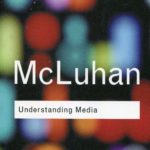
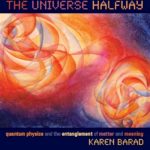
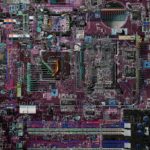
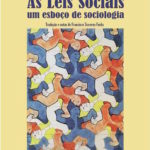
 O LaSPA é sediado no Instituto de Filosofia e Ciências Humanas (
O LaSPA é sediado no Instituto de Filosofia e Ciências Humanas (